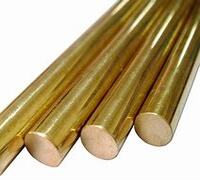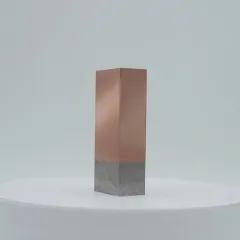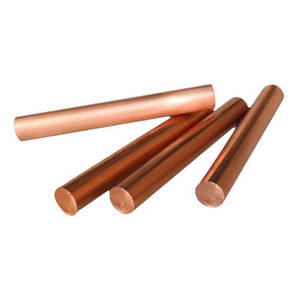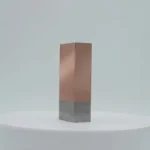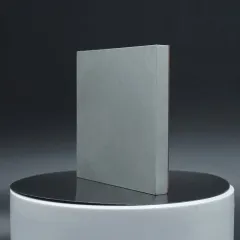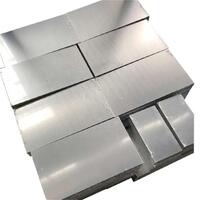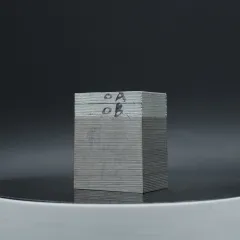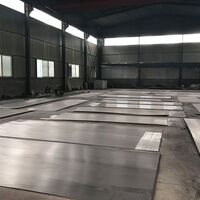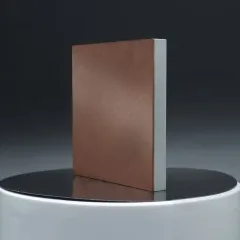Professional and high-quality metal alloys, ceramic products and concrete additives | RBOSCHCO
PRODUCT PARAMETERS
Description
Overview of Titanium-Copper Composite Rod Copper and Clad
Ti/Cu composite rod is a composite material of titanium and copper with excellent mechanical properties and corrosion resistance. Titanium is a high-strength, low-density metal with excellent corrosion resistance. At the same time, copper is a metal with high electrical and thermal conductivity, which improves the electrical and thermal conductivity of the material. Therefore, the Ti/Cu composite rod is a material with a high application value.
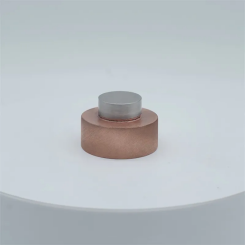
The advantages of Titanium-Copper Composite Rod Copper and Clad
High strength: The yield strength and shear strength of Ti/Cu composite rods can reach 135Mpa and 180MPa, which are higher than pure titanium alloys and copper alloys and can meet applications with higher strength requirements.
Good corrosion resistance: the outer layer of the Ti/Cu composite rod is stainless steel, which has excellent corrosion resistance, can resist seawater, nitric acid, sulfuric acid, and other corrosive media, and has a long service life.
Good processing performance: Ti/Cu composite rods can be manufactured into products of various shapes and sizes through different processing methods, such as rods, plates, wires, etc., with high production efficiency.
Low cost: The production cost of Ti/Cu composite rods is relatively low. Compared with pure titanium alloy and copper alloy, it can reduce production costs and improve product market competitiveness.
Environmental protection benefits: Ti/Cu composite rods will not produce toxic and harmful substances and will not pollute the environment, which aligns with the production concept of green and environmental protection.
Parameter table of Ti/Cu composite rod
| Parameter | Description | Typical Range/Value (Example) |
|---|---|---|
| Density | Mass per unit volume of the material | Varies, dependent on composition and processing |
| Composition | Ratio of titanium (Ti) to copper (Cu) | Customizable, based on specific requirements |
| Tensile Strength | Maximum tensile force the material can withstand without breaking | Varies, dependent on composition and processing |
| Yield Strength | Stress at which the material begins to plastically deform | Varies, dependent on composition and processing |
| Elastic Modulus | Stress-to-strain ratio within the elastic limit | Varies, dependent on composition and processing |
| Thermal Conductivity | Rate at which heat is conducted through the material | Varies, dependent on composition and processing |
| Coefficient of Thermal Expansion | Rate at which the material expands upon heating | Varies, dependent on composition and processing |
| Hardness | Resistance to indentation or scratching | Varies, dependent on composition and processing |
| Corrosion Resistance | Ability to resist chemical attack | High, due to the corrosion-resistant properties of titanium |
| Electrical Conductivity | Ability to conduct electricity | Varies, dependent on copper content and processing |
Applications of Ti/Cu composite rod
Ti/Cu composite rods are used in many fields, such as aerospace, electric energy, medical equipment, transportation, and aerospace etc.
In aerospace, Ti/Cu composite rods are used to manufacture structural parts and components such as aircraft fuselages, wing spars, and landing gears, which are highly strong and corrosion-resistant.
In the field of electric energy, Ti/Cu composite rods are used to manufacture transformers, electrolyzers, and other equipment, which can improve the transmission efficiency of electric energy and reduce energy consumption.
In medical devices, Ti/Cu composite rods are used to manufacture medical devices such as oxygen generators, lung washing machines, etc., which can improve medical efficiency and quality.
In the field of transport, Ti/Cu composite poles are made use of to make framework, body, structure, and various other elements of cars, trains, aircrafts, and various other cars and are made use of in transport, transport and various other areas.
In aerospace, Ti/Cu composite rods are also used to make rocket launchers, spacecraft structural parts, and other parts.

Applications of Ti/Cu Clad Rod Copper Cladding Titanium-Copper Composite Rod Copper and Clad
Production Method of Ti/Cu composite rod
- Hot Extrusion: Uses a titanium tube with a copper rod inside, sealed with titanium plates. It may have gas gaps, affecting bonding strength. High strength but rough surface.
- Hot Extrusion + Stretching: This process adds stretching to improve bending resistance and surface smoothness. It is popular due to good feedback.
- Explosion Bonding: Uses explosives to bond copper and titanium. Inefficient and costly.
- Explosion Bonding + Rolling: Combines explosion bonding with rolling for efficiency. Not suitable for mass production.
Company Profile
RBOSCHCO is a trusted global chemical material supplier & manufacturer with over 12-year-experience in providing super high-quality chemicals and nanomaterials, including boride powder, nitride powder, graphite powder, sulfide powder, 3D printing powder, etc.The company has a professional technical department and Quality Supervision Department, a well-equipped laboratory, and equipped with advanced testing equipment and after-sales customer service center.If you are looking for high-quality Ti/Cu Clad Rod Copper Cladding Titanium-Copper Composite Rod Copper and Clad, please feel free to contact us or click on the needed products to send an inquiry.
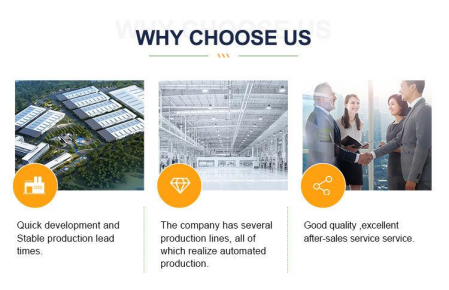
Packing of Ti/Cu Clad Rod Copper Cladding Titanium-Copper Composite Rod Copper and Clad
We have many different kinds of packing which depend on the quantity.
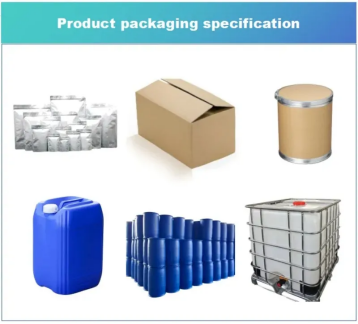
Payment Methods of Ti/Cu Clad Rod Copper Cladding Titanium-Copper Composite Rod Copper and Clad
L/C, T/T, Western Union, Paypal, Credit Card etc.
Shipment of Ti/Cu Clad Rod Copper Cladding Titanium-Copper Composite Rod Copper and Clad
By sea, by air, by express as soon as possible once payment receipt

5 FAQs of Ti/Cu composite rod
Q1
What are the advantages of titanium/copper composite rods compared with pure titanium rods?
Answer: Titanium/copper composite rods combine titanium’s high strength and corrosion resistance with copper’s electrical and thermal conductivity, resulting in better overall performance in certain applications, such as electrical connections, heat exchangers, etc.
Q2
What is the electrical conductivity of titanium/copper composite rods?
Answer: The conductive properties of titanium/copper composite rods mainly depend on the thickness and continuity of the copper cladding. The thicker and more continuous the copper cladding, the better the composite rod’s electrical conductivity.
Q3
What is the corrosion resistance of titanium/copper composite rods?
Answer: The titanium matrix mainly determines the corrosion resistance of titanium/copper composite rods. Titanium itself has excellent corrosion resistance and can resist the erosion of various chemical media, so titanium/copper composite rods also have good corrosion resistance
Q4
What are the mechanical properties of titanium/copper composite rods?
Answer: Titanium/copper composite rods combine the high strength of titanium with the ductility of copper, so they are strong and tough and can withstand large mechanical loads.
Q5
What should you pay attention to when using titanium/copper composite rods?
Answer: During use, care needs to be taken to avoid excessive heating and mechanical damage to maintain electrical conductivity, thermal conductivity and corrosion resistance. Additionally, due to the potential difference between titanium and copper, care also needs to be taken to avoid electrochemical corrosion.

